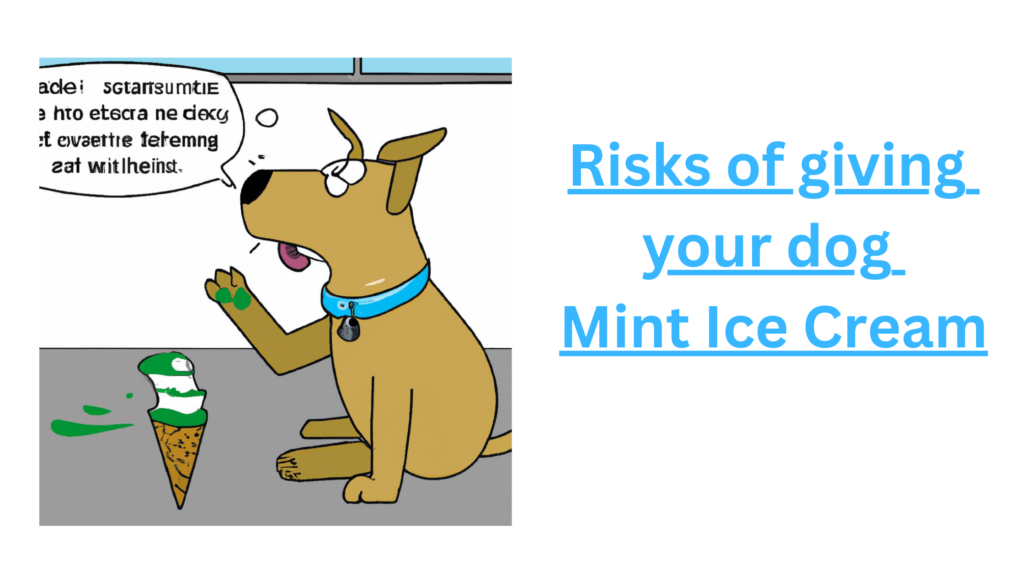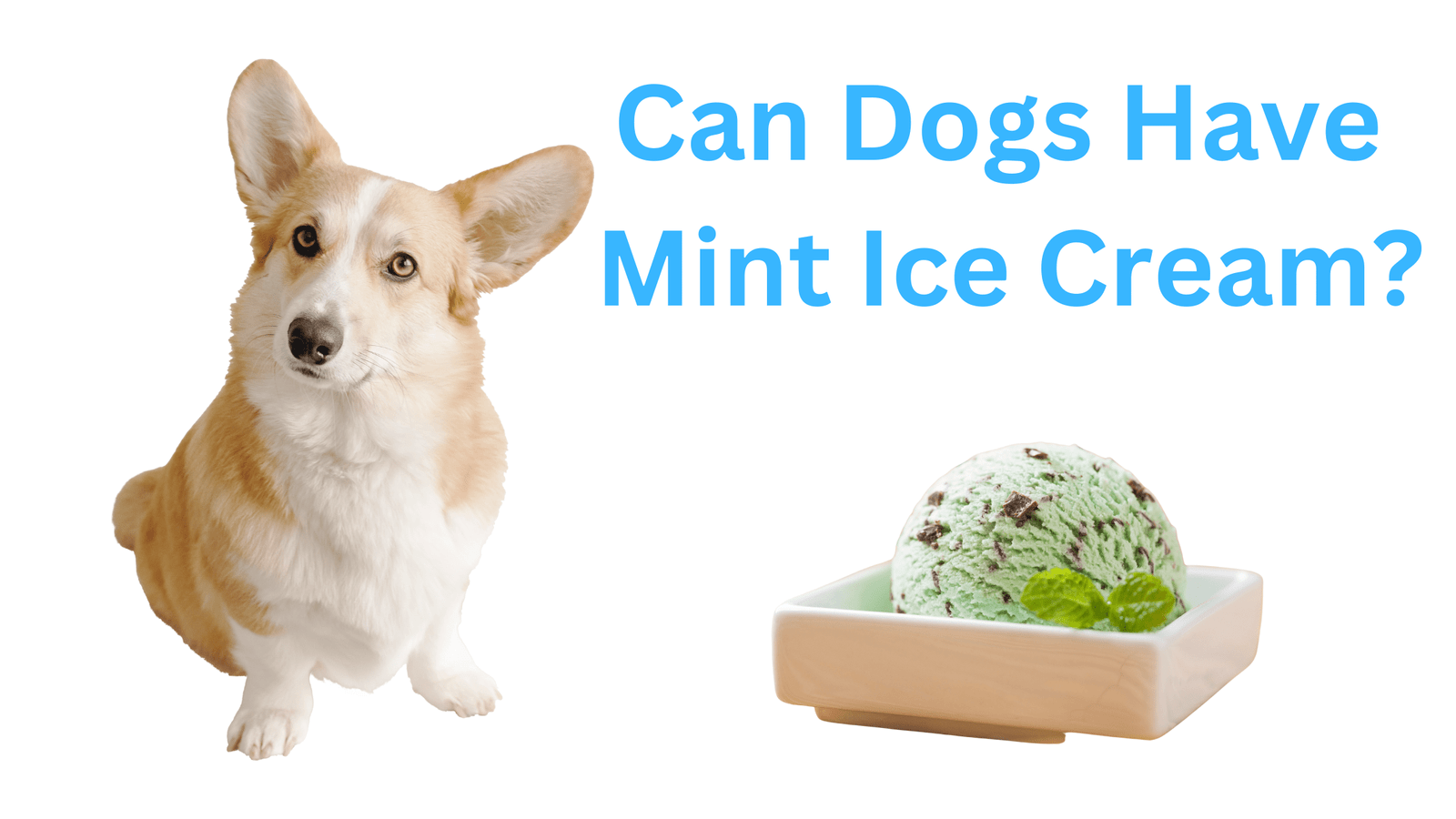Can dogs have mint ice cream? Not according to their owners. They say they don’t want their pets to eat anything other than fresh fruits and vegetables. The same goes for Frozen treats. This is why many dog food brands offer organic options. So does that mean dogs cannot have mint ice cream? Or even chocolate? Or caramel? Probably not!
There’s a common misconception that dogs aren’t allowed to consume Human Treats that humans enjoy. While some pet owners choose to feed their animals only natural foods, others believe that the whole point is to provide them with the healthiest possible diet. That being said, dogs are omnivores, meaning they can eat both plants and meat. In fact, there are no specific rules regarding what types of foods are safe for cats or dogs.
While it may seem counterintuitive at first, these ingredients are perfectly fine for dogs, provided they are fed in moderation. And since mint is considered a stimulant, it’s important to monitor your dogs’ energy levels after consumption. If they start acting hyper or anxious, stop giving them the treat immediately.
Read about – 4 Amazing Pumpkin Treats for Dogs | Homemade dog Treats
What ingredients go into making Mint Ice cream?

Mint Chocolate Chip Ice Cream is one of the most popular desserts among people. But what do you think goes into it? We took a look at the ingredients list and we’re sharing our findings here.
These are some of the ingredients used in making mint ice creams.
- Mint – This is an important part of making this dessert. Some types of mint commonly found include spearmints and peppermint. It may be added in its fresh form or in essential oils and extracts. Mint is often added to food and drink, in toothpastes, mouthwashes, and breath mints.
Mint is also useful as an ingredient in cooking, especially in sauces. It is also popular in baking because it adds flavor without changing the texture of baked goods. - A tablespoon or so of alcohol (whiskey or brandy) makes the mint ice cream smooth and creamy. It also helps keep it soft for several days.
- Chocolates – The chips or syrup are used to add a sweet flavor to mint ice cream
- Cream and milks are an important part of making any kind of frozen desserts. These ingredients help give them their smooth texture.
- Sugars – Sugar is added in Sweet Treats to add sweetness to an iced treat. Sugar-free treats use artificial sweeteners like Xylitol to enhance their flavors.
Benefits of Mint Ice Cream for Dogs
- It’s delicious!
- It helps with digestion.
- Fresh Breath – Mint is a well-known mouthwash because of its minty flavor. Therefore, you can enjoy your pets without having bad dog smells.
- Mint contains small amounts of vitamins A, which promote good eyesight and growth, Manganese which aids in bone health, and iron for healthy red blood cells in dogs.
- Milk and cream are a great source of vitamin A and D, phosphorus, calcium, and Zink, which are all beneficial for your dog’ s growth.
Risks of giving your dog Mint Ice Creams

It’s not a good idea to feed your dog mint ice cream, but it is possible. It depends on the type of mint you use and how much you give him. If you are using peppermint extract or oil, then yes, he can have some. But if you are using real mint plant leaves, I don’t think so.
Here I have listed some risks associated with giving your dog Mint Ice Cream that you must know-
SICKNESS
Chocolate, alcohol, sugar and ice cream are just some of the foods you might find inside your pet’s stomach when he chows down on something else entirely. A sick dog could lead to Upset stomach, diarrhea, vomiting, tremors, kidney failure, seizures and even death. But it doesn’t have to end there. Your pooch could suffer from heart disease, brain damage and even cancer due to the effects of ingesting certain substances.
Milk and cream often found in dog treats can cause severe gastrointestinal problems such as diarrhea, vomiting, bloated stomach, and even pancreatitis. In fact, some people think it’s cruel to feed dogs ice cream because of how much milk and cream is used in the product. But while most dogs tolerate small amounts of milk just fine, they usually don’t like large quantities of it.
LACTOSE INTOLERANCE
The problem is that dairy proteins act differently in dogs compared to humans. For example, dogs produce enzymes called lactase, which break down lactose into smaller molecules that are easier to absorb. However, unlike humans, adult dogs lack sufficient levels of lactase to properly process milk. This causes Digestive issues, symptoms similar to those seen in children who suffer from lactose intolerance — namely, nausea, cramping, and diarrhea.
TOXICITY
Toxic substances are often found in food products meant for pets. Mint ice cream is one such product. Mint extracts contain thujone, a natural chemical compound that causes liver damage. Thujone occurs naturally in plants like wormwood and absinthe, but it is also present in some essential oils. These oils are commonly added to foods and beverages for flavoring purposes. But they are often toxic to humans.
The mint extract that sometimes replaces real mint leaves can cause your dog illness. Chocolate is a favorite accompaniments to mint ice cream but chocolate contains theobromine a substance that is deadly to dogs. Xylitol is another ingredient that is toxic to dogs and can even cause liver failure. Even alcohol is harmful to animals. Dogs are very sensitive to alcohol because they metabolize it differently than humans do. They process alcohol much faster and therefore drink less than we do. This makes them particularly vulnerable to intoxication and even death.
ALLERGIES
Ingredients such as chocolate content and milk can cause severe allergic reactions in dogs. Chocolate contains caffeine, theobromine, and phenylethylamine, while milk contains lactose. These ingredients are toxic to most dogs. In fact, it takes just one bite of chocolate to make a dog sick. Some dogs develop symptoms within minutes of eating the candy. Other dogs experience symptoms hours later.
Symptoms include Stomach Upsets diarrhea, vomiting, abdominal pain, and even death. If you suspect your pet has been poisoned by chocolate, call your vet immediately. You may want to keep a close eye on your dog over the next few days.
OBESITY
A study published in the Journal of Animal Science found that dogs fed high amounts of cream and sugar gained more weight than those given plain ice cream. Researchers say it could be due to the fact that the cream and sugar are absorbed into the bloodstream faster than the fat does. “The cream and sugar are digested immediately,” says Dr. Daniela Soto-Ramirez, lead author of the study. “That causes rapid blood glucose levels.”
This leads to increased insulin production, which triggers cells to store more energy as fat. Artificial Sweetener Xylitol is another ingredient commonly added to foods meant for dogs, such as treats and chew toys. This sweetener is known to cause health issues in humans, including gum disease, tooth decay, and diarrhea.
What are some dog-friendly ice cream alternatives?
Here I have listed some frozen dog treats alternatives that you can give a try-
- Non-Dairy Frozen Dog Treat
- Watermelon Ice Cream for Dogs
- Lactose-free Peanut Butter and Banana Dog Treats
- Mixed Fruit Ice Creams for Dogs
- Dairy-free Dog Ice Cream
I am sure now you also want these recipes so for that 6 Non-Dairy Dog Ice Cream Recipes
Read about – Can dogs eat hush puppies? Are hush puppies safe for dogs?
CONCLUSION
Dogs can eat mint ice cream. However, it should be limited to a few bites per day. Also, make sure to check out the ingredients before buying any treats for your furry friend.
Mint ice cream is generally safe for dogs to eat, but there are a few things to keep in mind.
Mint ice cream typically contains xylitol, which is an artificial sweetener that is toxic to dogs. Mint ice cream may also contain chocolate, which can be dangerous for dogs.
Finally, mint ice cream can be high in fat, which can cause digestive issues for dogs. If you decide to feed your dog mint ice cream, there are a few things to keep in mind.
First, make sure that the ice cream does not contain xylitol or chocolate.
Second, start with a small amount of ice cream to see how your dog reacts.
Third, give your dog mint ice cream in a bowl to avoid a messy cleanup.
You now have tasty and healthy dog treats for your pets.
Frozen treats made with healthier ingredients will help you avoid health scares and hefty veterinary bills
These treats aren’t intended to replace the regular meal times; they’re just a way of occasionally spoiling our pets.
Frequently Asked Questions
What happens if a dog eats mint ice cream?
While they are not poisonous to pets, minty treats should only be eaten in small quantities to avoid digestive problems. Milk in dog food causes gas and bloating in sensitive animals. Minty treats contain fat, so excessive intake may lead to obesity.
Is mint toxic to dogs?
If your dog has been exposed to peppermints, he may be experiencing symptoms of toxicity. Call your vet if his behavior changes.
What flavor ice cream can dogs eat?
If you’re going to feed your pet ice cream, don’t use any of these ingredients: chocolate, xylitol (a sugar alcohol), macadamias, or coffee. Instead, go with Alternatives listed in this post, even if it has lower calories than some flavors. You could also consider making your own homemade frozen treats using safe ingredients.
Can dogs eat mint chocolate?
If it contains chocolate, it’s definitely toxic to puppies. Furthermore, most “mints” (or at least some brands) contain vanilla, which can be toxic to them.
Are mint Oreos toxic to dogs?
No. If your pet has ingested one single cookie, he/she should be fine. However, cookies aren’t recommended for pets. Chocolate is toxic to dogs, however, there’s not enough chocolate in an Oreo cookie to cause any serious harm.







